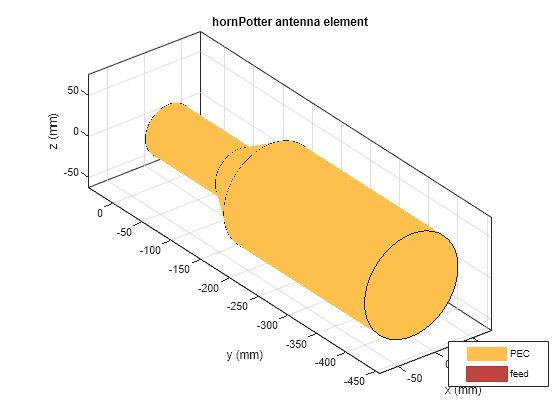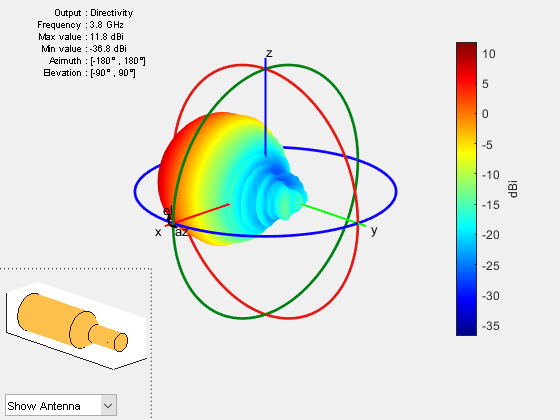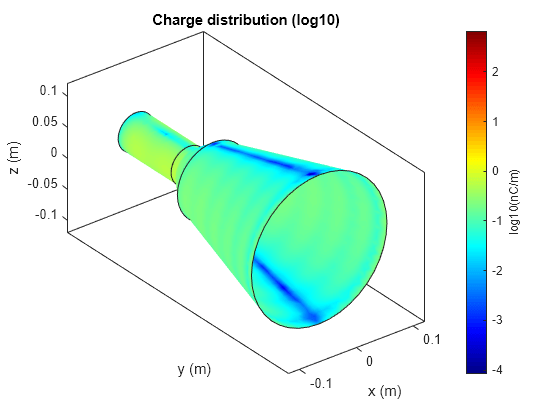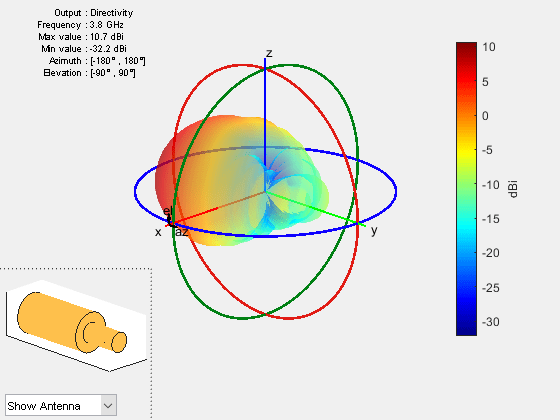hornPotter
Description
The default hornPotter object creates a Potter horn antenna
resonating around 3.84 GHz. The Potter horn antenna is a dual-mode, conical horn antenna with
discontinuity. These antennas are used in wireless applications where properties like low
cross polarization level, low side lobe level, and beam symmetry are required. Potter horns
are widely used in satellite communications for frequency reuse.
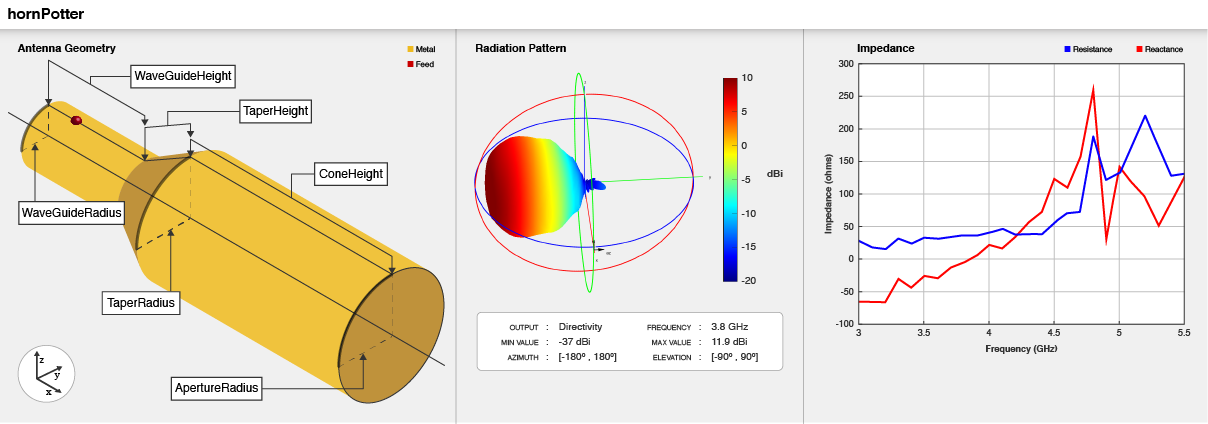
Creation
Description
ant = hornPotter
ant = hornPotter(PropertyName=Value)PropertyName is the property
name and Value is the corresponding value. You can specify several
name-value arguments in any order as
PropertyName1=Value1,...,PropertyNameN=ValueN. Properties that you
do not specify, retain their default values.
For example, hornPotter(ConeHeight=0.05) creates a Potter horn
antenna with the cone height of 50 mm.
Properties
Object Functions
axialRatio | Calculate and plot axial ratio of antenna or array |
bandwidth | Calculate and plot absolute bandwidth of antenna or array |
beamwidth | Beamwidth of antenna |
charge | Charge distribution on antenna or array surface |
current | Current distribution on antenna or array surface |
design | Create antenna, array, or AI-based antenna resonating at specified frequency |
efficiency | Calculate and plot radiation efficiency of antenna or array |
EHfields | Electric and magnetic fields of antennas or embedded electric and magnetic fields of antenna element in arrays |
feedCurrent | Calculate current at feed for antenna or array |
impedance | Calculate and plot input impedance of antenna or scan impedance of array |
info | Display information about antenna, array, or platform |
memoryEstimate | Estimate memory required to solve antenna or array mesh |
mesh | Generate and view mesh for antennas, arrays, and custom shapes |
meshconfig | Change meshing mode of antenna, array, custom antenna, custom array, or custom geometry |
msiwrite | Write antenna or array analysis data to MSI planet file |
optimize | Optimize antenna and array catalog elements using SADEA or TR-SADEA algorithm |
pattern | Plot radiation pattern of antenna, array, or embedded element of array |
patternAzimuth | Azimuth plane radiation pattern of antenna or array |
patternElevation | Elevation plane radiation pattern of antenna or array |
peakRadiation | Calculate and mark maximum radiation points of antenna or array on radiation pattern |
rcs | Calculate and plot monostatic and bistatic radar cross section (RCS) of platform, antenna, or array |
resonantFrequency | Calculate and plot resonant frequency of antenna |
returnLoss | Calculate and plot return loss of antenna or scan return loss of array |
show | Display antenna, array structures, shapes, or platform |
sparameters | Calculate S-parameters for antenna or array |
stlwrite | Write mesh information to STL file |
vswr | Calculate and plot voltage standing wave ratio (VSWR) of antenna or array element |
Examples
More About
References
[1] Ahmed, Zobaer, Asif Zaman, and Lutfa Akter. “Parametric Analysis of Pickett Potter Horn Antenna.” In 2015 IEEE International Conference on Telecommunications and Photonics (ICTP), 1–4. Dhaka, Bangladesh: IEEE, 2015. https://doi.org/10.1109/ICTP.2015.7427926.
[2] Gohil, Shweta K, and Usha Neelakantan. “A Wideband Dual Mode Horn Antenna with Tapered Discontinuity.” In International Research Journal of Engineering and Technology (IRJET), 02:913–16, 2015.
Version History
Introduced in R2021a
